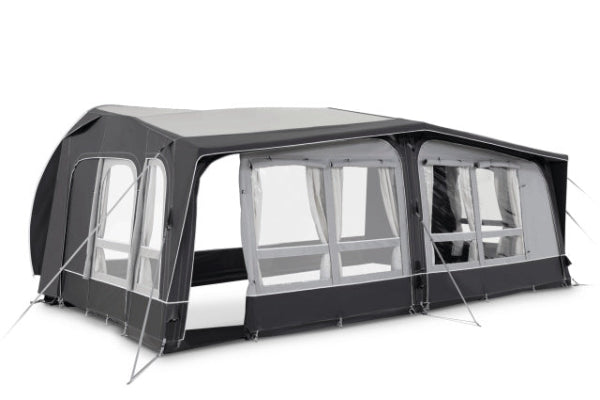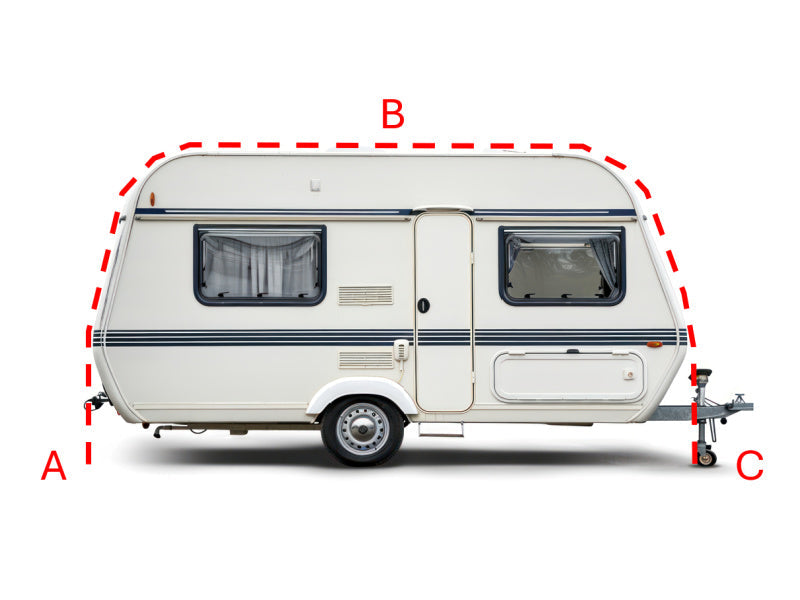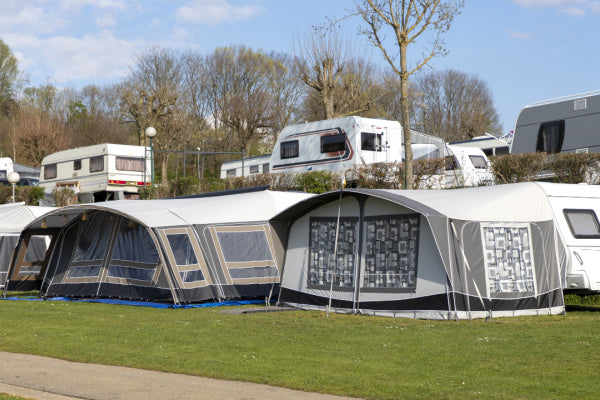Where to Place a Generator When Camping
Where’s the best place to put a generator when camping? Far enough not to gas you, close enough not to lose it. Camping generators need airflow, dry ground, and peace from angry neighbours. Keep reading for noise tips, weather hacks, and UK campsite do’s and don’ts.
Core Principles for Safe and Effective Generator Placement
Prioritising Safety Above All Else
Carbon Monoxide (CO): The Silent Killer and the 20-Foot Rule
Camping generators release carbon monoxide, an odourless, invisible gas that can be deadly in enclosed spaces. Always place your generator at least 6 metres (20 feet) away from tents, vans, or any structures.
Never use one indoors or even under partially covered shelters. Airflow is essential for safety.
Exhaust Management: Wind Direction and Fume Dissipation
Pay attention to wind direction. You don’t want fumes blowing back into your tent or campsite.
Position the generator so exhaust disperses away from where people are gathered. It’s a simple trick that makes a big difference.

Fire Prevention: Clearances from Tents, Dry Vegetation, and Flammables
UK weather can be damp, but don't underestimate fire risks. Place your generator away from dry grass, bushes, branches, or fuel containers.
Give it space and avoid stacking anything on or around it. Treat it like a small campfire: useful, but potentially dangerous.
Electrical Hazards: Grounding, Dry Surfaces, and Weather Protection
Set your generator on stable, dry ground. Avoid soft soil, mud, or slopes. Use a mat, plywood, or any firm base to keep it level and off the wet ground.
Protect it from the elements using covers or enclosures—just ensure airflow isn’t blocked.
Burn Prevention: Hot Surfaces and Safe Refuelling
Generators get extremely hot while running. Always wait until it cools down before refuelling.
Never add fuel while it’s running, and be cautious around it to avoid burns, especially if you have kids wandering around.
Noise Considerations and Campground Etiquette
Understanding and Respecting Campground Generator Hours
Most UK campsites have set generator hours—often banning use early morning or late at night.
Check the rules before you arrive. Following them isn’t just polite—it keeps you in good standing with staff and fellow campers.
Strategic Placement to Minimise Noise for Yourself and Neighbours
Distance is your friend when it comes to noise. Try placing your generator 10–15 feet from tents and gathering areas.
Even a small buffer can help reduce disturbance and make your camp experience more peaceful.
Utilising Natural Barriers and Distance
If you're near trees, hills, or a vehicle, use them as sound blockers. A parked car or a gentle slope can muffle the hum without enclosing the generator dangerously.
Always leave enough space for ventilation.
The Benefit of Inverter Generators for Quieter Operation
Inverter generators are quieter by design and ideal for campsites. They also tend to be more fuel-efficient, lighter, and less obtrusive.
If you camp often, investing in one might be worth it just for the peace.

Practicality, Convenience, and Security
Balancing Proximity to Your Setup with Safety Distances
It’s tempting to place the generator right next to your gear, but safety must come first.
Keep it visible but at a safe distance. Use outdoor-rated cords to connect it to your tent or appliances.
Extension Cord Management and Safety
Run cords in a tidy way to avoid trips or tangles. Only use weatherproof cords rated for outdoor and generator use.
Avoid winding cords tightly as it can cause heat build-up.
Protecting Your Generator from Weather Elements
UK weather can turn on you fast. Use a canopy, tarp, or weatherproof enclosure to shield your generator from rain and harsh sun.
Just make sure there's enough airflow so it doesn’t overheat.
Securing Your Generator Against Theft
Even in peaceful campsites, theft can happen. Secure your generator with a chain or heavy-duty lock.
Anchor it to your car, a tree, or another fixed point. Don't assume it's safe just because you're deep in the countryside.
Optimal Generator Setups and Practices to Avoid
Recommended Locations and Setup Techniques
The "Downwind and Away" Strategy
Always keep your generator downwind. This simple rule helps fumes blow away from your tent, guests, and food prep areas.
Pair that with good distance and you’ve got a safe setup.
Using Your Vehicle as a Potential Sound/Safety Buffer (Cautiously)
Your car can serve as a sound barrier. Place the generator behind it—but never block airflow or trap exhaust.
This method reduces noise without compromising safety, as long as it’s done carefully.
Leveraging Designated Generator Areas in Campgrounds
Many UK campsites now have specific generator zones. These are designed with safety and minimal disturbance in mind.
If your site offers one, use it—it’s usually the best option.
Using Generator Tents or Weatherproof Enclosures Safely
Generator tents exist for a reason. They shield your equipment from weather while allowing ventilation.
Don’t DIY a wooden box unless you’re confident it’s safe—overheating is a serious risk.
Ensuring a Level and Stable Surface
Avoid placing your generator on sloped or soggy ground. It could tip or get waterlogged.
Use paving slabs, plywood, or even a plastic mat to create a firm base.
Critical Mistakes: Where NEVER to Place Your Generator
Inside Tents, RVs, Camper Vans, or Any Enclosed/Semi-Enclosed Space
Never, ever run a generator inside a tent or vehicle. Even if you crack a window, carbon monoxide builds up quickly and can kill.
Only use it outdoors with plenty of space around.

Directly Under Awnings or Attached Overhangs
It might look sheltered, but awnings can trap heat and fumes. Avoid placing your generator directly underneath.
Use a free-standing shelter instead.
On Wet, Uneven, or Unstable Ground Without Precautions
Generators are heavy and vibrate while running. If placed on unstable ground, they can shift, tip, or short-circuit.
Fix this with a stable, level platform before starting it up.
Near Open Flames, Grills, or Stored Fuel
Heat and fuel are a dangerous mix. Keep your generator well away from barbecue areas, campfires, or petrol containers.
Treat it like a mini engine with real fire risk.
Essential On-Site Operational Best Practices
Adhering to Campsite-Specific Generator Rules
Different regions in the UK have different rules. English sites may allow generators with quiet times, while Scottish ones are often stricter.
Check before you go. If wild camping, stay extra discreet and respectful.
Safe Refuelling Procedures (Cool Engine, No Spills)
Let the generator cool before refuelling. Wipe up any spilled fuel and close the cap tightly.
Refuelling while it’s hot is one of the most common—and dangerous—mistakes.
Always Use a Carbon Monoxide Detector Near Sleeping Areas
A portable CO detector is a smart addition to your camping kit. It alerts you to dangerous fumes and could save lives.
Place it inside your tent or camper when a generator is in use nearby.
Pre-Use Inspection of Generator and Cords
Before switching on, inspect your generator for any wear or faults. Look at the cords, check oil levels, and clean the air filter if needed.
Prevention is better than troubleshooting in the rain.
Considering Generator Alternatives or Power Conservation
If you can, bring solar panels or a battery pack as a backup. Reducing reliance on a generator is quieter and better for the environment.
Only run it when absolutely necessary—many tasks don’t need full power.
Other content you might like:
- What Are The Disadvantages Of A Portable Generator?
- Will A 1000w Generator Run A Refrigerator?
- How Big Of A Generator Do I Need For Camping?
- Should You Leave A Generator On All Night?
- How Long Will A 2000-Watt Generator Run On A Full Tank Of Gas?
- How To Cover A Generator In The Rain?
- Do I Need To Ground My Generator When Camping?
- Is It Okay To Enclose A Generator?
- How Long Can A Portable Generator Run Continuously?
- How Long Can Gas Sit In A Generator Before It Goes Bad?
- Will A 3500 Watt Generator Run Two Refrigerators?
- What Are The Tips For Using A Portable Generator?
- How Generators Work For Dummies?
- Do You Have To Turn Off Your Main Breaker When Using A Generator?





Leave a comment